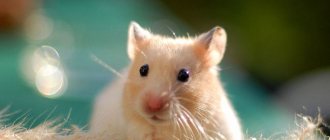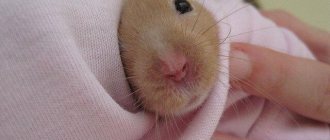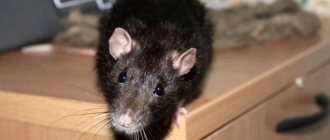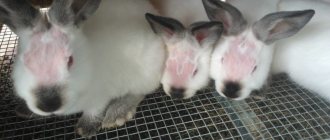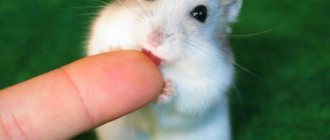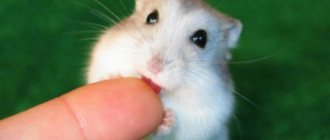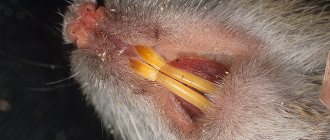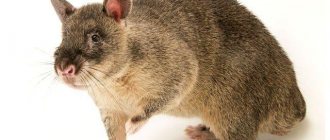If you keep a rat as a pet, you will likely be alarmed by its sudden baldness. Many owners find it difficult to understand whether this is a consequence of a natural process such as shedding or something wrong with the pet. However, there is no need to worry ahead of time. It is often very easy to determine the cause of hair loss in rodents.
In this article, we will explain to rat owners why it is normal for rodents to sometimes lose hair. We’ll also go over the main problems that can cause premature baldness in pet rats, and their possible solution.
Is hair loss serious in rats?
It is not normal for a rat to have large bald spots. Often the cause of baldness is “adrenal disease.” When rats molt in the spring and fall, they lose their summer and winter coats. But they are not actually completely hairless because they are growing new hair.
If your pet looks balding or has bald spots, you have something to worry about. There is a small chance that the hair loss is actually the result of seasonal coat changes, but if the skin is simply “bald”, this is a bad sign. If you see completely bald patches, you should contact your veterinarian.
When to Seek Veterinary Help
As mentioned above, the development of alopecia directly depends on the underlying cause.
For example, with seasonal shedding and a lack of vitamins, the dog’s hair falls out gradually. At the same time, the animal looks absolutely healthy. With hormonal imbalances, the animal's hair falls out profusely, and itching and pain may appear at the location. In advanced cases, the hair can easily be torn off, and seborrhea develops. If the dog is “in position”, then it may also exhibit partial loss of hair. Animals under severe stress are also very likely to experience hair loss.
In the case of a food allergy in a dog, hair loss is accompanied by symptoms such as redness of the skin, inflammatory reactions, the formation of ulcers and papules, and lacrimation. Quite often, a pet's hair follicles become inflamed due to a bacterial infection. In this case, before hair loss, scabs, crusts and even pustules may form on the skin.
In parasitic diseases, hair loss is accompanied by clinical manifestations such as damage to the eyes and skin (crusts, ulcers), as well as the formation of papules near the ears, armpits, groin and mouth. With the disease pattern alopecia in domestic dogs, puppies are born with normal healthy hair, but with age they begin to quickly go bald.
Thus, if your dog has significant hair loss and severe itching, redness and any skin lesions, you should immediately seek veterinary help to determine the cause of the hair loss and prescribe a course of effective treatment.
Molting in baby rats
Rats are completely hairless at birth. They need a little time to grow a shiny coat.
Soon their hairs grow back and they begin to look like adults. But usually baby rats molt between 3 and 4 weeks of age. And they become completely hairless again.
New fur grows in the cubs (although there are cases when rat pups, after complete baldness, no longer grow full fur) after the first molt. Although they will continue to shed throughout their lives, the adult's shedding should not be as heavy.
After the first molt, rats regain their clean qualities and regularly tidy up their fur.
Shedding in older rats
As rats age, they become significantly lazier and decide to stop grooming themselves. Even if they continue to groom themselves, their fur will no longer grow back at the same fast pace as when they were young.
Older rodents should not go completely bald (if this happens, this is a serious cause for concern). However, their fur may fall out in small clumps. The overall appearance of their hair will also not be as silky as before. But this is normal for an old animal.
How much do kittens of hairless breeds cost?
The cost of purebred animals cannot be low. Moreover, most hairless cats are the result of serious breeding work. And some are extremely difficult to buy, for example, Kohana, Bambino, Elf, Dwelf.
The most accessible, which is natural due to their prevalence, are sphinxes. However, the price largely depends on what class the kitten belongs to:
- A pet or pet class is an animal without the right to breed; these are sold for castration - from $400.
- Breed class (exclusively females) is used for breeding - from $500 to $800.
- Show class or elite among sphinxes - from $1000-1200 to $5000.
Seasonal molt
In the spring, some rats molt. Sometimes rodents lose some of their hair during the change of season, and this changes their coat. In spring, hair returns.
Continue to monitor your pet to make sure it has new hair. If they begin to grow back over time, then baldness was a consequence of molting.
One more thing: try not to worry if your rats don't shed at the same time. Sometimes their seasons are different because you keep them indoors and they tend to not understand when the seasons change.
Varieties
It is known that different genes contribute to “abnormal” fur development. Several varieties of hairless cats – Sphynxes – are officially recognized in the world:
- Canadian Sphynx;
- Don Sphynx;
- Petersburg Sphinx (Peterbald, Peterbald).
But there are species that are just going through the process of becoming:
- Elf;
- Bambino;
- Dwelf;
- Ukrainian Levkoy;
- Kohana (Hawaiian hairless).
Cat breeders have developed different attitudes towards pebbles. To some they seem scary, to others incredibly beautiful.
Canadian Sphynx
A pear-shaped belly, paws resembling human hands, a tail curled into a donut, huge ears, eyes resembling a lemon - this is all he is - the Canadian Sphynx. The breed is simply called the Canadian. Of the outdated names - Canadian hairless, Canadian bald, moon cat, because the animal looks like an alien creature.
The entire body of the Canadian is covered with light fluff no more than 2 mm long. Therefore, the leather has a suede-like feel to the touch and has also been compared to a peach or nectarine. All sphinxes have hair on their nose, behind their ears, paws, and the tip of their tail. During estrus and pregnancy, i.e. when hormonal changes occur, hair may appear on other parts of the body. Also, in some Canadians, if it is genetically determined, the fur sometimes grows at low temperatures or an unsuitable diet.
Not only the appearance, but also the character of the Canadian Sphynx is unique. The animals are sociable, loving, and smart (they are in the ranking of the smartest cats). Loneliness is a disaster for them. Canadians need to be kissed, hugged, and slept next to them.
Potential Problems Causing Premature Hair Loss in Rats
While rats can lose hair as they age, there are many things that can cause your rat to also lose hair at a young age. It's worth examining your rat closely for some negative signs.
Hair loss caused by other underlying problems in rats is called alopecia. And these are the main potential reasons:
- Parasites.
- Fungus.
- Malnutrition.
- Violence from a former owner or other rats.
- Allergies.
- Bullying by cage neighbors.
- Stress or boredom.
Let's look at each reason in turn and find out what you can do about it.
The guinea pig's skin is peeling and itchy. What to do?
Skin problems are one of the most common reasons why guinea pig owners visit the clinic. The main causes of such problems can be: various mechanical damage, damage to the skin by ectoparasites (lice, lice, various types of mites), pathological fungal or bacterial microflora, errors in the diet or metabolic disorders
Owners should pay attention to the following signs of the disease: peeling and flaking skin on the ears, paws, itching, the guinea pig itches constantly, guinea pig baldness, redness, the appearance of scabs and lumps, the appearance of neoplasms. Baldness (alopecia) can occur both in individual areas of the body and cover large areas
Baldness can be the result of stress, for example, when housekeeping rules are violated. Another cause of alopecia is the sea creatures themselves eating their fur. This behavior is associated with improper feeding and can be corrected by normalizing the diet. A characteristic sign of skin diseases is itching - the guinea pig itches, may fall over on its side, and its convulsive movements are similar to an epileptic attack.
Often found in guinea pigs, pododermatitis is a disease of the skin, subcutaneous tissue and bones of the distal limbs. On the soles of the paws, the skin begins to peel off, hair falls out, and growths, cracks, and sores form. Factors influencing the appearance of this disease are a small cage that limits movement, excess weight, old age, traumatic surfaces, etc. Impaired grinding of the claws can also cause the appearance of pododermatitis.
Guinea pigs often develop crusts on their lips. These crusts occur due to inflammation of the lips - cheilitis. This disease can be bacterial, viral, or fungal in nature; in addition, injuries, stress and old age also contribute to the development of inflammation.
Dermatomycosis - infectious diseases of the skin and its derivatives caused by pathogenic fungi dermatomycetes are also found in guinea pigs, which is of particular importance due to the danger of infection to humans.
If you notice the symptoms described above, you should immediately consult a doctor. To conduct a differential diagnosis of skin diseases, the veterinarian, as a rule, talks with the owner, finds out how, where the guinea pig is kept, what it is fed (collecting an anamnesis), and examines the animal.
If necessary, additional research methods are prescribed, microscopy of smears - fingerprints, LUM control, studies to detect ectoparasites and pathogenic microflora. In some cases, elimination diets are prescribed.
Parasitic infections (mites or lice)
Rats are very susceptible to parasitic infections, and these can mainly be lice or mites. They can easily be picked up on your owner's clothes when you are wandering around the outside world and then coming home - it is very difficult to protect pet rats from such infections.
Lice can often be seen visually on the fur itself, and you can spot clusters of mites beneath the surface. If you suspect or are convinced of this, the easiest thing to do is see a veterinarian, who will usually treat all your rats for the same fee (and even if they don't have mites or lice yet, this will help stop them from getting them).
It is a bad idea to use sprays and powders unless directed by your veterinarian as they may do more harm than good.
Improper diet, vitamin deficiency
The condition of the coat is the first to reflect the lack of essential microelements and vitamins in the animal’s diet. Often a simple vitamin complex can improve the situation. Food from a pet store is usually balanced, but you can often observe a situation where a domestic rat does not eat its entire portion, choosing only tasty pieces. In this case, it is recommended to limit treats and switch the animal to good granulated food. Vitamin supplements will also help if the animal has suffered stress - a nervous and anxious state can also trigger shedding.
IMPORTANT: Remember that you cannot constantly give vitamin supplements - an excess of microelements is no less harmful than a deficiency. Therefore, after completing the course, you just need to make sure that your pet receives a full diet, including vegetables and fruits.
Malnutrition
Even with proper feeding, the rat may refuse food itself. If so, you can add a multivitamin and even extra minerals to your rat's diet. You must use a multivitamin specifically formulated for rats (which you can buy online or from your veterinarian). Add it to food or water as directed on the package.
The composition of specific foods varies greatly from region to region. So it's difficult to know what kind of malnutrition your rats are experiencing without expensive tests. However, it is usually cheaper and easier to use generic additives to combat them.
Ringworm
Sometimes hair loss is accompanied by redness and irritation of the skin, this can be a symptom of ringworm. Animals with weak immunity and those that have suffered a respiratory viral infection are more susceptible to this dangerous fungal disease.
Ringworm is a skin disease that can affect humans. Therefore, you need to wear rubber gloves when caring for a sick animal. Under no circumstances should you treat your pet with ointments intended for humans, as the rabbit will lick off medicine intended for external use only. It is necessary to show the animal to a veterinarian, he will tell you how to treat this disease. The most popular drugs for ringworm in rabbits are Ketoconazole and Miconazole. Sick animals must be isolated. Those they come into contact with may also be infected. The hair around the affected area is trimmed. All equipment used when caring for sick animals must be thoroughly disinfected.
Prevention of the disease is compliance with sanitary standards and rules for keeping animals.
- Animal cages must be cleaned of excrement and regularly disinfected with products containing chlorine.
- It is necessary to include a sufficient amount of vitamins in the diet to maintain good immunity.
- Rabbits should always have clean and fresh drinking water.
- The premises where rabbits are kept should be well ventilated and fairly warm. Ringworm may appear due to hypothermia. Decorative rabbits should not be allowed to walk in the rain or frost.
- Newly acquired animals are kept in quarantine cages separately from the main herd for at least two weeks.
- Timely vaccination will help improve the health of pets and increase resistance to diseases.
Cruel treatment
We are in no way suggesting that you can abuse your rats. But perhaps the rat had another owner who used violence against it. After such treatment, the rat may begin to lose hair.
Or the rat was specially bred by an indifferent breeder with the specific intention of making it food for another animal. These rats are usually very poorly treated and rarely socialized, which can cause terrible suffering for the rat.
The only thing you can do is give them love, support, time and hope that they will recover from their ordeal.
Allergies
Rats, according to veterinarians, are highly prone to allergic reactions, and the culprits can range from air freshener to the deodorant you bought. It could also be something in their food.
You can now use the process of eliminating foods and objects to try to figure out what caused the allergy. But while rats are suffering and you don't know what's causing the hair loss, you can wash your rat in a mild, hypoallergenic shampoo (and conditioner).
You can also add some fish oil to your food, which is considered a natural antihistamine for rats.
If none of this works, you can ask your veterinarian to give your rats Prednisolone, but be aware that this may have side effects.
Frequently asked questions about chinchilla breeding
When purchasing chinchillas for breeding and sale, various questions arise.
Why chinchillas don’t reproduce - the main reasons for refusing to mate
Reasons for refusal to mate may be:
- inappropriate age of the couple;
- weak or sick animal;
- improper conditions of care and maintenance;
- individual qualities.
At what age are chinchilla babies ready to “say goodbye to mommy”?
Chinchilla cubs weigh on average 30-75 grams, require mother's milk and continue to eat it for another two months. Small chinchillas are allowed to be separated from an adult female when the weight of the babies reaches 200-260 grams.
Can relatives of chinchillas mate?
To exclude sick and weak offspring with birth defects, it is not recommended to mate chinchilla relatives.
How to make friends with a future chinchilla pair before mating?
Before placing one animal with another, it is recommended:
- choose a cage with a height of less than one meter and a width of 75 cm;
- thoroughly wash the enclosure before adding the chinchillas;
- remove all foreign objects from the cage so that the animals are not injured during a possible fight;
- build a maze of boxes so that the male can escape if the female shows aggression;
- roll the female in sand with the male's feces, and place the male rodent in the female's uncleaned cage;
- first place the male in his cage, and place the female next to him;
- the owner of the animals must observe the behavior of the couple for four hours. If chinchillas begin to show aggression or fight, they are immediately isolated and given medical care;
- to distract rodents from the conflict, it is necessary to add coarse hay to the enclosure - it will distract them from rude behavior;
- You will have to observe the behavior of the animals until the end of the day;
- It is recommended to feed the couple with high-quality food that includes fresh fruits, useful microelements, and various vitamin supplements;
- wait patiently until your beloved pets prepare to reproduce;
- if mating has not occurred for a long time, start looking for another partner.
Fights/bullying
Sometimes rats, like people, don't get along very well with each other. A rat that is experiencing a large amount of unexplained hair loss may be beaten by one of its cage mates. If you find that you hear a rat squealing loudly, this is most likely the case.
If you rats have only recently met each other, it may take a while for the situation to improve. But it will happen eventually. Fighting or bullying is a dominance ritual and will stop once it is clear which rat is dominant.
Loneliness
Rats are social creatures that love to live in society. This is why it is advisable to live in pairs: two castrated males, two females, or a castrated male and a female. If rats feel lonely, they may become depressed and this can affect your fur.
Sometimes living with people provides enough company to satisfy the need for companionship. But if you are away from work, school or on weekends, it can be very sad for your pet rat, who will feel abandoned. Therefore, living with a partner is the smartest and healthiest option.
Stress or boredom
The last likely cause of rat hair loss is stress or boredom. Rats are very smart creatures for their size and need something to keep them busy. If they can't go out and play, they may become frustrated and begin to pull their fur.
They may also experience stress due to too much noise, light, etc. To relieve your animal of boredom, provide him with a place to play. To relieve stress, try to figure out what is causing it and remove it from your rat's life.
You may also find rats with short natural fur, curly or even non-existent - such as Dumbo, Double and Rex.
Diagnosis and treatment
Diagnostic procedures are similar for both cats and dogs. During the examination, the veterinarian will perform several procedures, including:
- various blood tests (biochemical and clinical);
- study of hormones - cortisol, reproductive system and thyroid gland;
- skin scraping to check for fungi and parasites;
- Wood's lamp diagnostics;
- biopsy.
Having established the cause of baldness, the doctor will determine one or another treatment. Depending on the specific disease, your veterinarian will prescribe one or more of these therapies:
- expansion of the diet;
- special vitamins for wool;
- hormonal or antihormonal drugs;
- antihistamines and antiparasitics;
- antibiotics;
- anti-inflammatory drugs;
- washing affected areas with disinfectants;
- remedies for fleas and other insects.
To successfully treat alopecia in dogs and cats, it will also be necessary to keep your pet away from potential allergens.
Other rare causes of baldness
Basically, if the hair loss occurs in large areas and you can clearly see through the body, it's time to take your rat to the vet. Do this as soon as possible, as adrenal disease, especially in males, is fatal.
Other possibilities causing hair loss in rats:
- Diseases of the adrenal glands.
As mentioned earlier, it usually develops only in males. - Serious tick-borne plague.
Causes itching and hair loss all over the body. - Dry skin.
Often the skin becomes dry and the tail actually becomes clogged with ferret oil to compensate.
